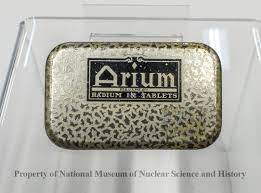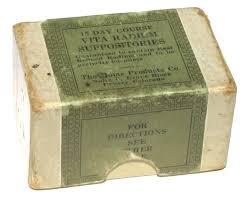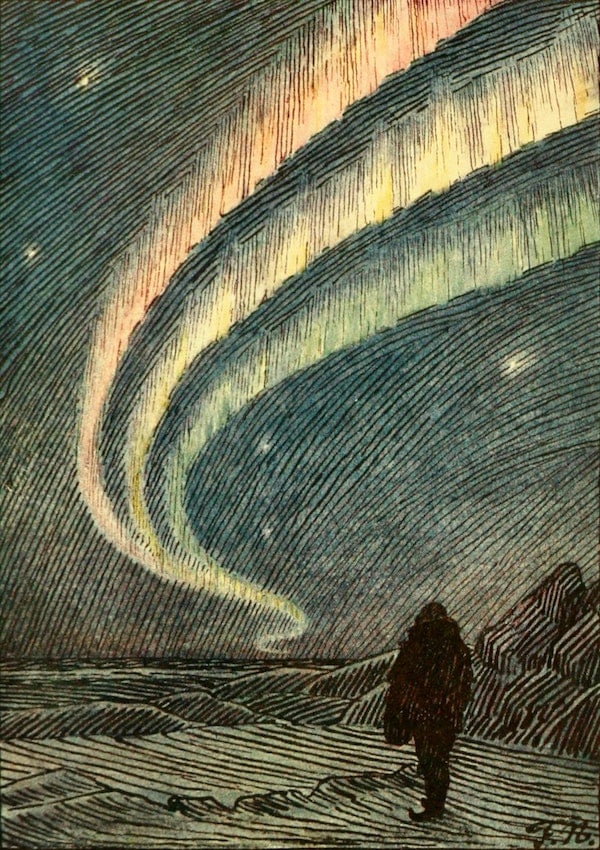How much radiation we talking? I mean I’d assume the answer is the same amount of attention we currently pay to beer, bananas, fluorescent bulbs or some recycled metals. All of which can emit varying degrees of radioactivity. So zero attention in everyday life.
Everyone in the world is continually exposed to background radiation. That level has gone up considerably since the US began testing atom bombs in the atmosphere. The current AVERAGE level in THE WORLD is about 3 millisieverts per year. In the US it averages about 6 mSv per year (depending on where you live; it might be much higher.)
By comparison, these days: One chest x-ray delivers 20 μSv = .02 mSv. On the other hand, one CT scan delivers from 1 to 20 mSv.
Depends on what you mean “before they knew what radio activity was”. They did horrible things with it before they knew about the health effects.
Like putting Radium in pills you swallow:

Or even in suppositories which are even worse:

They put thorium in toothpaste:

They used massive powered X-Ray machines with no protection in shoe store so you could see how your feet fit in shoes:

They put radium in paint then put it on pocket watch faces so they glow, but the workers didn’t know the effects of radium and all died of massive cancer of the mouth, jaw, and throat. I’m not putting picture here for that. Google those at your own risk.
One of the early pros working with radioactivity was Marie Curie. She died of aplastic anemia in 1934. Her research notes are still radioactive. Her lab was said to be radioactive as well, yet it was not decontaminated until 1991.
The radium paint one is particularly bad because they told the workers (mostly women) to give their brush a fine tip using their mouth.
And the company know pretty well the dangers, the men who worked with the material used protection against the radiation.
I remember reading how, for thousands of years, Aboriginal Australians would avoid outcrops or locations with high levels of radioactive material. Those areas were known as places of sickness and to be avoided, warnings were passed down in Aboriginal lore and intergenerational stories.
It’s fascinating how people, even without knowing anything about the “why”, just realised that whoever hangs around a lot in those specific areas gets sick, and then they’re able to retain that information for many generations.
One of my favourites from aboriginal oral history I that, apparently, they have a history about how they used to cross to some peninsula over dry land, but that the sea slowly came in and made the area inaccessible. Geologists have found that they’re accurately telling the story of sea level rise that happened around 50 000 years ago, and I seem to remember that they’ve found archaeological evidence that backs the story as it’s been told through generations up to this day.
I am one generation removed from a traditional Lakota life and I think that one thing people forget is how important oral history was to people in the ancient world. You would hear a story when you were young and it was paramount to learn it and repeat it exactly as before. And as time went on, if you deviated or embellished the story, you were shunned because everyone knew the story. Imagine your favorite grandparent telling you something and telling you that you must repeat it exactly to your grandchildren when that time comes. You would not disrespect your favorite relative and spoil your place in passing on the story. So millennia does not matter as much when you think about that. Without outside influence, language changes only slightly and stories that are considered the “truth” about life, are super important and passed on as such.
Like any other material. And later, they blamed the aftereffects on witchcraft or bad humor balance.
I was just listening to the QAA podcast episode about witch hunts in the middle ages, and those women literally all died because some random neighbor’s cow stopped producing good enough milk.
See Radium Girls.
And I apologize in advance for what you’ll see.






